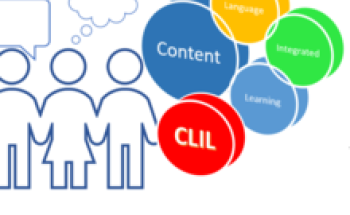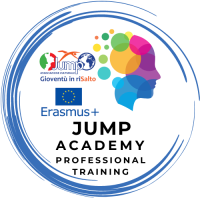
CODING@SCHOOL. Computational Thinking Development – Coding As A Tool To Build Classroom Interaction And Develop Students Creativity
Computer programming is a fundamental skill for so many different applications, not just software development or cutting-edge research into artificial intelligence. It makes banking more accessible, smooths out supply lines, and creates those fantastic online experiences we love. Coding encourages to use logic and algorithms to create a program.
Description
More info here https://associazionejump.it/course/codingschool/
In today’s fast-changing world, innovation is key, and teachers must keep up to prepare students with 21st-century skills. Coding is one of the most essential of these, it develops logical thinking, creativity, and problem-solving. From phones to smart appliances, coding shapes our daily lives and the future job market. This course introduces teachers to the basics of programming and computational thinking, even with no prior experience. Participants will explore fun and accessible ways to teach coding through games and unplugged activities, and discover how to use digital tools and apps in class. Coding also supports sustainability, collaboration, and innovation. The course helps teachers design engaging lessons, promote critical thinking, and build a more dynamic, future-ready classroom environment.
Learning objectives
Developing a new know-how and skills needed to apply effectively Coding at school
Exploring several apps and platforms, being able to use the most suitable and appropriate according to different needs and contexts
Developing coding lessons with a variety of digital but also unplugged tools
Experimenting interactive methodologies to engage and motivate all students using coding apps, strategies and fostering computational thinking approaches
Widening perspectives and creative thinking in the cooperation teacher-students in the new digital era of education
Methodology & assessment
Furthermore, in line with the JUMP Academy method, our courses are based on a strategic balance between formal and non-formal education, indoor and outdoor education and the team takes care of a very important aspect of international mobility which is the intercultural learning which we develop with short excursions and facilitating the interaction with local partners, businesses and citizens of our territory. Each local context has its own economy so it’s always useful, in training programs, to get in contact with concrete examples (experiential learning and real based learning).
We always try to connect our learners to local teachers and students to cooperate in developing innovation and networking for future projects.
Materials, digital tools & other learning resources
JUMP provides, after the completion of the course, all presentations, training materials and any other digital and learning tools used during the training sessions. Furthermore, extra materials are sent if there are updates and new ones researched afterwards.
Certification details
At the end of the training, JUMP delivers a formal certificate of attendance and the team is at disposal to fill the Europass certification document according to the EU model template and other needed documents for reporting of the sending institution.
Our courses are in line with the Erasmus+ Quality standards for courses under Key Action 1 (learning mobility of individuals)
Pricing, packages and other information
-
Course package content:
In the course fee are included: organization, administration, trainers' costs and classes, further training/learning materials, certification, support of the team H24, photo-video reporting.
Extra costs are referred to logistics. JUMP is sending all the precise info when the participants or the Erasmus coordinator ask for information.
-
Additional information:Description of the services and activities included in the course package (such as accommodation, meals, transport) or available at extra cost.
-
Cancellation & changes:
With a proper time in advance is possible to cancel the participation, informing and explaining the motivation.
-
Additional information:The options and conditions for change and cancellation, and the policy in case of unforeseen circumstances (force majeure).
Additional information
-
Language:English
-
Target audience ISCED:Primary education (ISCED 1)Lower secondary education (ISCED 2)Upper secondary education (ISCED 3)
-
Target audience type:TeacherICT CoordinatorCompany staff
-
Learning time:25 hours or more
Upcoming sessions
Past sessions
More courses by this organiser

CLIL IS PRACTICE. A Training Course For The Creation Of Interactive Lessons In Foreign Languages

BUSINESS ENGLISH. The Course To Improve Technical Business Language Proficiency And Empower Business Relationships


